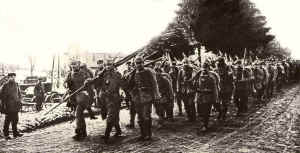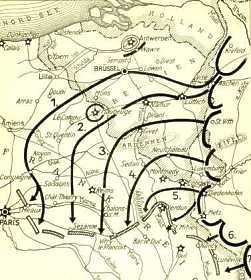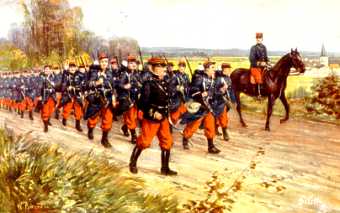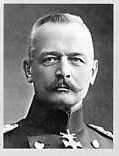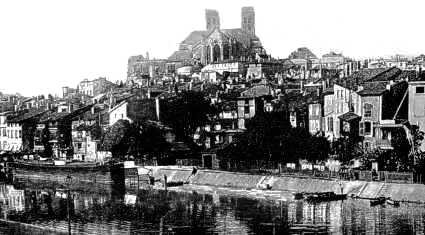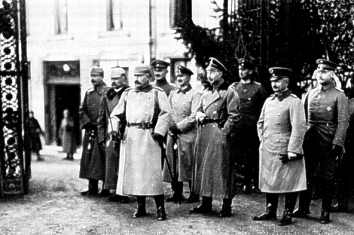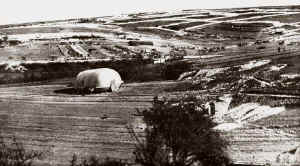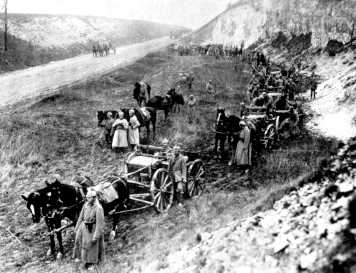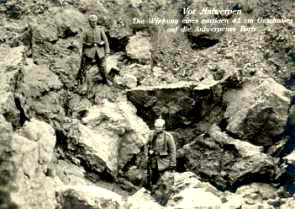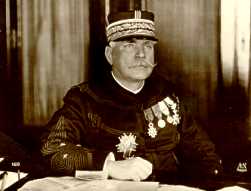| Homepage Verdun - Phase 1 - Phase 2 - Phase 3 - Phase 4 - Phase 5 - Phase 6 | ||||||||||
|
|
||||||||||
| Phase 1 - The preparations before the Battle of Verdun (December 1915 - 12 February 1916) | ||||||||||
|
|
||||||||||
| Content
- The preparations before the Battle Short introduction The preparations before the Battle The German plan of attack The German preparations The situation from the French perspective |
||||||||||
|
|
||||||||||
The Battle of Verdun is considered the greatest and lengthiest in world history. Never before or since has there been such a lengthy battle, involving so many men, situated on such a tiny piece of land. The battle, which lasted from 21 February 1916 until 19 December 1916 caused over an estimated 700,000 dead, wounded and missing. The battlefield was not even a square ten kilometres. From a strategic point of view there can be no justification for these atrocious losses. The battle degenerated into a matter of prestige of two nations literally for the sake of fighting...... |
||||||||||
|
|
||||||||||
From the outbreak of World War I on august 4 1914, Germany was entangled in a war on two fronts: with Russia in the east and with France, England and Belgium in the west. The German's attack-strategy was a part of the Schlieffenplan, which had the intention for the German army to beat France and England as quickly as possible. After that it could be launched at the east front against the Russians.
The German army had to march right through Belgium in a large curve and
then encircle and defeat the French army, as well as allied England, with
its rightwing. After battles in Mons, le Cateau, the Marne, the Aisne and
Ypres the German army was forced to a stand. The front stabilised at the
end of 1914 when the armies were situated opposite each other and they
entrenched themselves from Nieuwpoort in Belgium up tot Belfort at the
Swiss border.
The war in action came to a standstill turned into immobile trench
warfare.
In 1915 almost everyone, however, was convinced that the war would be
over soon. Attempts were made to move the front and try to force a final
breakthrough. England attacked in Neuve Chapelle, Aubers Ridge, Festubert,
Ypres (where poison gas was used for the first time) and in Loos. France attacked in Artois and Arras and later on that year in the
Champagne and in Arras once again; heavy combats also took place in the
Argonnen area.
The allies had insufficient equipment, a shortage of heavy weapons and
ammunition and poor communication-facilities. There were tactical
weaknesses in the conduct of war; the English and French frontal
attack-strategies could not survive the well organised
defence-lines of the Germans, who were literally able to wipe out the
attackers with their machine-guns. This all led to horrible
casualty-lists: in the fall of 1915 only, these losses are an estimated
150.000 Germans and 250.000 allied. Both sides were convinced that the year of 1916 would bring the turning
point.
Falkenhayn's view
was that it would be beyond German military possibilities to gain victory
in an all-embracing, massive offensive. He considered England to be Germany's most important enemy who would
lose its strength as soon as France, their most important ally, would be
defeated. England would then withdraw from Europe’s continent and the
unlimited submarine-war, putt into action by Germany, would force England
on its knees in the end.
Apart from the psychological considerations, there also was a military
consideration why to choose this particular place for a target of war. It
was because Verdun was situated in a salient in the frontline as a result
of which the Germans in a half circular-shape surrounded the battleground
and this gave them a great advantage in their gunnery bombardments.
The leaders of the Vth army wished to launch an attack on both banks of
the river Meuse simultaneously. Falkenhayn claimed to have
insufficient manpower at his disposal and therefore the attack had tot be
restricted to the right riverbank of the Meuse with a relatively small
deployment of ten German divisions.
To maintain full control over the events all reserve-troops were put
under the direct command of Falkenhayn himself and not under the
command of Crown Prince Wilhelm. The German plan of attack aimed to destroy the French frontlines
completely with the present field guns and the howitzers. The
long-distance-guns should keep all supply-routes under fire to keep France
from bringing in reinforcements.
The firepower of 1200 German guns was tremendous, an ammunition-supply,
sufficient for 6 days was at hand near the guns to a total amount of
2.500.000, brought in by 1300 ammunition-trains. The German preparations were made in all secrecy: entire villages
situated in the occupied zone were evacuated in order to make room for
five army corps, consisting of ten divisions with a total of 150.000
heads of attack-troops.
Roads and railways were constructed for transportation. Accommodations
were built, gun-emplacements were constructed, and heavy artillery was
supplied.
The defence of Verdun had been seriously neglected ever since the
beginning of the war. At the fall of Liege and Antwerp in 1914 the surrounding forts
were literally destroyed by the Germans and their Big Bertha's. The French supreme command therefore considered forts to be no longer
useful to the defence and had them dismantled. The guns, as far as they
could be displaced, had been brought elsewhere. The occupation of the
forts had been brought back tot a minimum. The defences around Verdun were
also seriously neglected. The frontline around Verdun was often no more
than a ditch and sometimes the second en third defence-line were simply
absent. Defence-trenches and barbed wire entanglements were often not
laid-out. The armament of the Verdun-sector was minimal as well. There only were 270 pieces of guns available with too little ammunition
(whereas the Germans had more than 1.200 pieces laid-out). Also colonel Emile Driant, who later became known as the famous defender of the Bois de Caures, protested against the neglecting of Verdun lines. He pointed out the shortage of men and 'barbed wire in particular'. His report provoked one of Joffre’s legendary rages of fury but did not lead tot reinforcement of the lines. Only at the very last moment when it became clear that the Germans were planning something the Chief of Staff of the French army, general De Castelnau came to visit Verdun. He gave orders to reinforce the defensive line but too few men were available and supplies like barbed wire could not be brought in on time, so that the works hardly made any progress. To reinforce the army, two divisions were sent who only arrived at Verdun at February 12th, the date of the planned attack. |
||||||||||
|
|
||||||||||
| Homepage Verdun - Phase 1 - Phase 2 - Phase 3 - Phase 4 - Phase 5 - Phase 6 | ||||||||||
|
|
||||||||||
|
|
